A milling machine mainly refers to a machine tool that uses a milling cutting tool to process various surfaces of workpieces. Usually, the rotary motion of the milling cutting tool is the main motion, and the movement of the workpiece and the milling cutting tool is the feed motion. It can process planes, grooves, various curved surfaces, gears, etc. In addition to milling planes, grooves, gear teeth, threads, and spline shafts, milling machines can also process more complex profiles, with higher efficiency than planers, and are widely used in machinery manufacturing and repair departments.
Moreover, it can also be used to process the surface of the revolving body, the inner hole, and the cutting work. When the milling machine is working, the workpiece is mounted on the table or the accessories such as the indexing head. The rotation of the milling cutter is the main movement, supplemented by the feed movement of the table or the milling head, and the workpiece can obtain the required machining surface.
Due to the multi-blade interrupted cutting, the productivity of the milling machine is high. In simple terms, a milling machine is a machine tool that can mill, drill, and bore a workpiece.
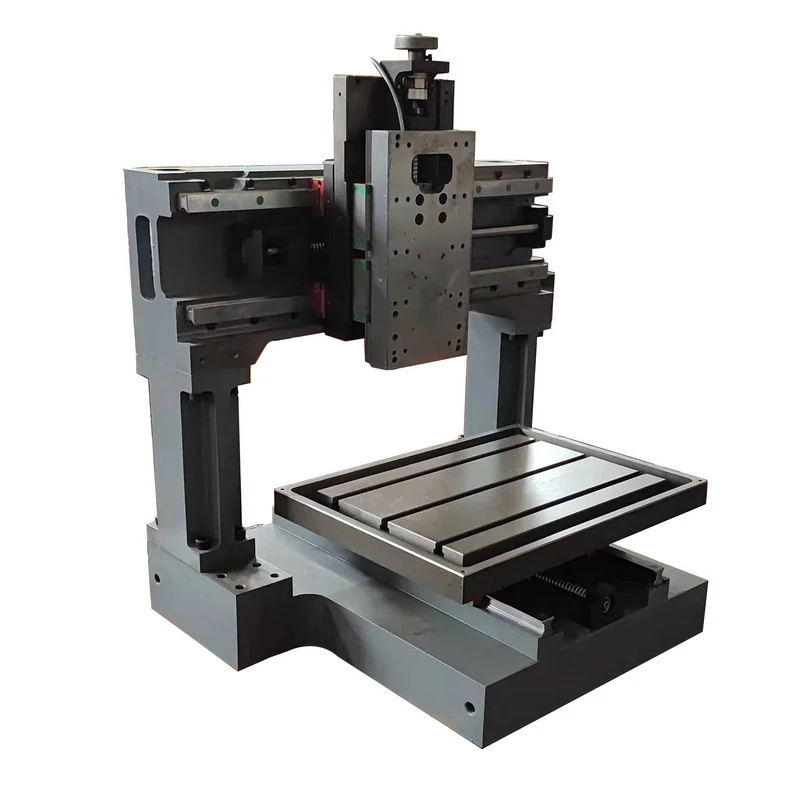
In 1818: the first milling machine was a horizontal milling machine created by American E. Whitney.
In 1862: To mill the spiral groove of the twist drill, American J.R. Brown created the first universal milling machine, which was the prototype of the milling machine for the lifting table.
Around 1884: the gantry milling machine appeared.
In the 1920s: semi-automatic milling machines appeared, and the worktable used stops to complete the automatic conversion of "feed-fast" or "rapid-feed".
After 1950, milling machines developed rapidly in terms of control systems, and the application of digital control greatly improved the automation of milling machines.
Especially after the 1970s, the digital control system and automatic tool change system of the microprocessor were applied to the milling machine, which expanded the machining range of the milling machine and improved the machining accuracy and efficiency.
With the continuous intensification of the mechanization process, CNC programming has been widely used in machine tool operations, which has greatly released the labor force. CNC programming milling machines will gradually replace manual operations. The requirements for employees will also be higher and higher, and of course, the efficiency will be higher and higher.

There are universal, horizontal and vertical, etc., mainly used for processing small and medium-sized parts, the most widely used.
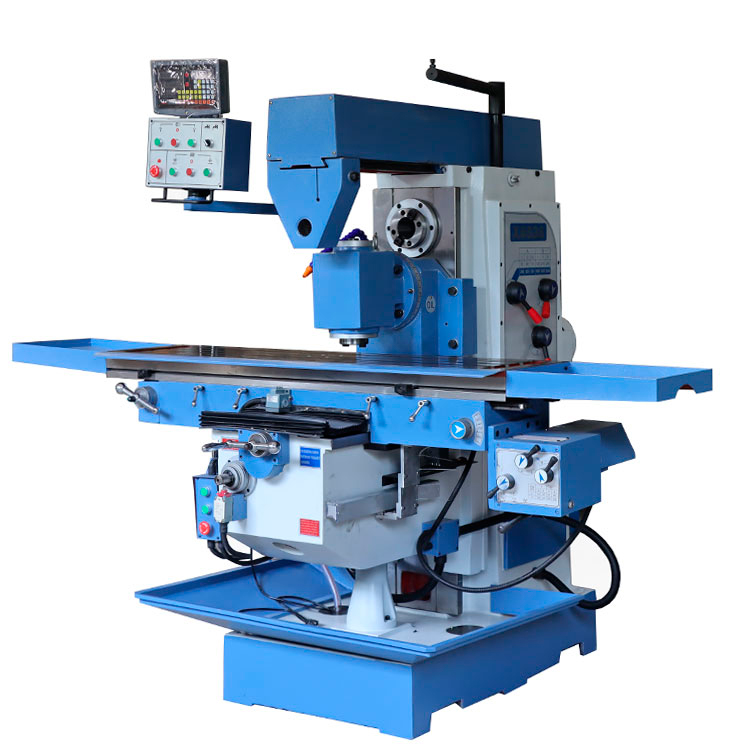
Gantry milling and boring machines, gantry milling planers, and double-column milling machines, all of which are used to process large parts.
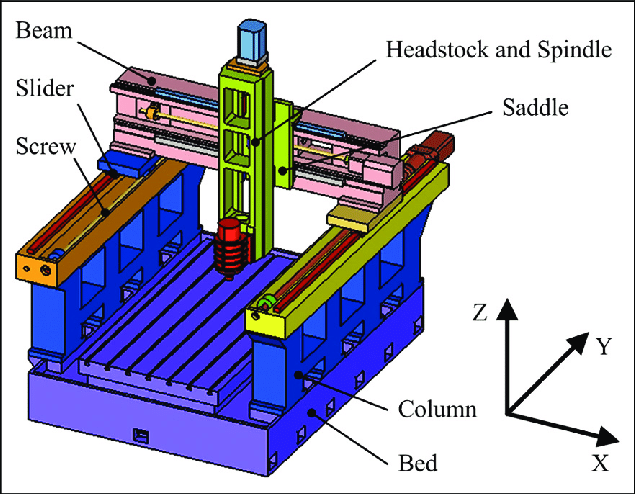
The horizontal milling head of the former can move along the column guide rail, and the worktable is fed longitudinally; the end milling head of the latter can move horizontally along the cantilever guide rail, and the cantilever can also adjust the height along the column guide rail. Both are used for machining large parts.
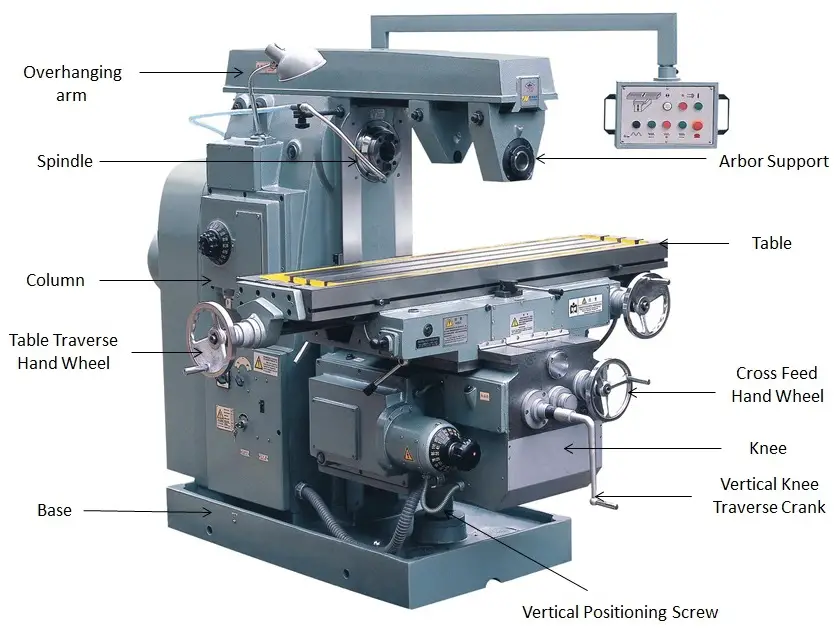
There are two types of rectangular tables and circular tables, which is a medium-sized milling machine between the lifting table milling machine and the gantry milling machine. Its vertical movement is completed by the milling head rising and falling on the column.
A small lift table milling machine for machining instrumentation and other small parts.
Used for mold and tool making, equipped with various accessories such as end milling head, universal angle table, and plug, and can also perform processing such as drilling, boring, and plunging.
such as keyway milling machines, cam milling machines, crankshaft milling machines, roll journal milling machines, and square steel ingot milling machines, etc., are special milling machines manufactured for processing corresponding workpieces.
a small milling machine used for milling small parts such as instruments and meters.
a milling machine with the milling head mounted on the cantilever, the bed is arranged horizontally, the cantilever can generally move vertically along the column guide rail on one side of the bed, and the milling head moves along the cantilever guide rail.
a milling machine with the spindle mounted on the ram.
The machine body is arranged horizontally, and the columns and connecting beams on both sides form the gantry milling machine. The milling head is mounted on the beam and column and can move along its guide rails. Usually, the beam can move vertically along the guide rail of the column, and the worktable can move vertically along the guide rail of the bed for processing large pieces.
a milling machine for milling planes and forming surfaces.
a milling machine that copies the workpiece. Generally used for machining complex shape workpieces.
a milling machine with a lifting table that can move vertically along the guide rail of the bed. Usually, the worktable and the saddle installed on the lifting table can move longitudinally and laterally, respectively.
The rocker arm milling machine can also be called a turret milling machine, a rocker arm milling machine, and a universal milling machine. The turret mills machine of the machine tool is a light general metal cutting machine tool with two functions vertical and horizontal milling. Flat surface, bevels, grooves, and splines for small parts, etc.
The worktable cannot be raised and lowered but can be moved longitudinally and laterally along the guide rail of the bed base, and the milling head or column can be moved vertically.
Such as tool milling machines: are milling machines used for milling tools and molds, with high machining accuracy and complex machining shapes.
Milling machines can be divided into:
copy milling machines,
program-controlled milling machines
CNC milling machines.
To be used for machining planes, steps, grooves, forming surfaces, and cutting workpieces on milling machines.
There are many commonly used types of milling cutters according to their uses:
Used for machining planes on horizontal milling machines. The cutter teeth are distributed on the circumference of the milling cutter and are divided into straight teeth and helical teeth according to the tooth shape. According to the number of teeth, there are two kinds of coarse teeth and fine teeth. The helical-tooth coarse-tooth milling cutter has few teeth, high tooth strength, and large chip space, which is suitable for rough machining; the fine-toothed milling cutter is suitable for finishing.
used for vertical milling machines, face milling machines or gantry milling machines, upper processing plane, there are cutter teeth on the end face and circumference, and there are coarse teeth and fine teeth. Its structure has three types: integral type, insert type, and indexable type.
used for machining grooves and stepped surfaces, etc. The cutter teeth are on the circumference and end face, and cannot be fed in the axial direction during the end milling operation. When the end mill has end teeth that pass through the center, it can be fed axially (usually double-edged end mills are also called "keyway mills" and can be fed axially).
It is used to process various grooves and stepped surfaces, and there are cutter teeth on both sides and on the circumference.
used for milling grooves at a certain angle, there are two types of single-angle and double-angle milling cutters.
It is used for machining deep grooves and cutting workpieces, and there are more teeth on its circumference. In order to reduce friction during milling, there are 15' to 1° secondary declinations on both sides of the cutter teeth. In addition, there are keyway milling cutters, dovetail milling cutters, T-slot milling cutters, and various forming milling cutters.
The cutter teeth are made of cemented carbide or other wear-resistant tool materials and are brazed on the cutter body.
The cutter teeth are fastened on the cutter body by mechanical clamping. The replaceable teeth can be a head of a solid tool material or a head of a welded tool material. The milling cutter with the cutter head mounted on the cutter body is called the internal grinding type; the cutter head is sharpened separately on the fixture is called the external grinding type.
This structure has been widely used in face milling cutters, end milling cutters, and three-side edge milling cutters.
Metal cutting machine tools have implemented the export product quality licensing system, and products that have not obtained the export product quality license are not allowed to be exported. When ordering, the equipment parameters, metric and inch system, power supply, voltage, and frequency, as well as random accessories, the color of the machine tool, etc. must be clearly specified. In view of the wide variety of CNC punch presses and different standards in the sheet metal industry, when customers order molds, they should learn the following information from the manufacturer:
determine which of the long guide or short guide type the mold structure is and whether it is an imported Murata structure or a Trumpf structure or Yangsen Structure;
whether the punching force of this mold is suitable for this machine tool, otherwise, the structure of the mold must be changed or other processing methods must be selected;
if the machine station is a non-rotating station, the double keyway structure must be considered for the guide bush or the lower die;
in order to determine the height of the lower mold of the mold (forming mold);
the material and thickness of the sheet processed by the customer must be determined to determine the material and gap selected for the mold;
the direction of the positioning pin (slot) of the mold (especially the special-shaped mold) should be determined according to the customer's processing requirements. In addition, except for the square edge mold, the guide sleeve or lower mold of the other molds must consider two keyways;
There are many types of molds, and it is necessary to clarify the type of mold ordered by the customer.
1. When loading and unloading the workpiece, the tool must be removed, and the cutting head and hand should not be close to the milling surface.
2. When using a milling machine for tool setting, it must be jogged or hand-cranked, and fast forward is not allowed.
3. When advancing and retracting the tool quickly, pay attention to whether the handle of the milling machine will hit someone.
4. Do not feed too fast, and do not change speed suddenly, and the limit stop of the milling machine should be adjusted well.
5. The Asahi milling machine must be stopped when moving up and down, measuring the workpiece, adjusting the tool, and tightening the speed change.
6. When disassembling and assembling the end mill, the work surface should be padded with wooden boards, the pulling out of the flat mill should be disassembled, and the force should not be excessive.
7. It is strictly forbidden to touch or wipe the rotating parts and knives with cotton yarn.
8. In general, a collet can only clamp one workpiece at a time. Because a collet clamps more than one workpiece at a time, even if the clamp is tight, the force during rough feeding is very large, and the two workpieces are easy to slide between them, causing the workpiece to fly out, the knife is broken, and the injury accident.
1. Cleaning of bed and components, cleaning of iron filings, and sanitation of surrounding environment;
2. Check the oil level, not lower than the oil mark, and add lubricating oil to each part;
3. Cleaners, clamps, and measuring tools.
1. Clean and adjust the workbench, screw handle, and column inserts;
2. Check and adjust the clutch;
3. Clean three-way guide rails and linoleum, clean the inside and outside of motors, machine tools, and accessories;
4. Check the oil circuit and add lubricating oil to all parts;
5. Tighten all screws.
1. Cleaning of bed and parts, cleaning iron filings and surrounding environment, cleaners, clamps, measuring tools;
2. Check the oil level, not lower than the oil mark, and add lubricating oil to each part.
1. Disassemble and clean the oil felt pads of various parts;
2. Wipe each sliding surface and guide rail surface, wipe the table and the horizontal direction, lift the screw, wipe the knife transmission mechanism and the knife rest;
3. Wipe all corners.
1. All oil holes are clean and unobstructed and lubricating oil is filled;
2. Lubricating oil is added to each guide rail surface, sliding surface and each screw rod;
3. Check the transmission mechanism oil tank body, and oil level, and refuel to the elevation position.
1. Check and tighten the pressure plate and insert screws;
2. Check and tighten the fixing screws of the slider, the driving mechanism of the knife, the handwheel, the screws of the working table bracket, and the fork top wire;
3. Check and tighten other loose screws.
1. Check and adjust the tightness of belts, pressure plates, and inserts for a proper fit;
2. Check and adjust the sliding block and lead screw.
1. Remove the rust from each part, protect the painted surface, and do not collide;
2. Deactivation, spare equipment guiding rail surface, sliding screw handwheel and other exposed parts that are easy to rust are oiled and anti-corrosion.
Most of the gantry milling machines are made of steel or cast iron. In the long-term use process, due to the friction between the two contact surfaces of different degrees, the surface of the milling machine guide rail will be worn to different degrees, which will seriously affect the machining accuracy and production efficiency of the equipment.
Traditional repair methods usually use metal plate affixing or replacement, but require a lot of precise tolerances manufacturing and manual scraping, repairing requires many processes and a long construction period. The problem of scratches and strains on the gantry milling machine can be solved by using polymer composite materials, among which there should be a mature technology system.
Due to the material's excellent adhesion, compressive strength, and oil and wear resistance, it provides a long-lasting protective layer for components. It only takes a few hours to repair the scratched part of the machine tool and put it into use. Compared with the traditional method, the milling operation is simpler and the cost is lower.
The development of horizontal boring and milling machines has attracted much attention because of its injection of the concept of acceleration. The transmission elements, such as electric spindles, linear motors, and linear guides, which are technical support for high-speed milling operation, have been widely used, pushing the running speed of the machine tool to a new height. The innovative design of the spindle-replaceable horizontal boring-milling machining center solves the disadvantages of the electric spindle and the boring bar mobile telescopic structure. Technological innovation.
The development of floor-type milling and boring machines leads to the trend of modern processing with its new design concept. The structure type with no boring shaft ram type and various milling heads exchanged with the concept of high-speed processing are full of style, which can greatly replace traditional milling processing. the trend of. Various milling head accessories represented by the two-coordinate swing angle milling head have become the main means to achieve high-speed and high-efficiency composite machining. Its process performance is wider, the power is higher, and the rigidity is stronger, which is a major breakthrough in the development of floor milling and boring machines.
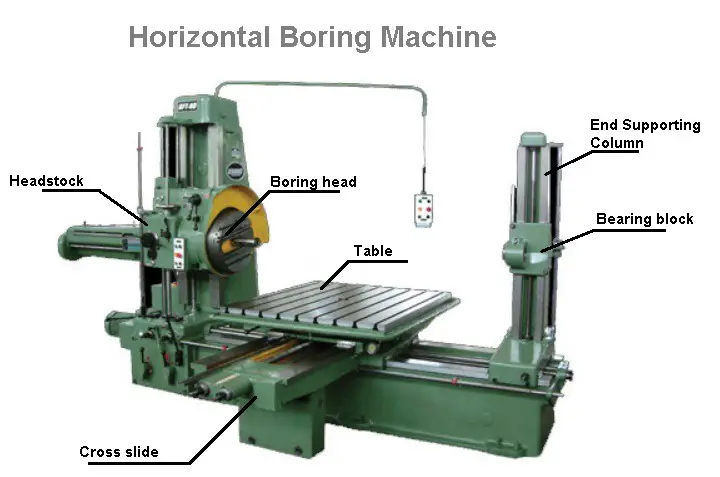
The main key component of the horizontal boring and milling machine is the spindle box, which is installed on the side of the column. There are also a few manufacturers who use the double-column thermal symmetry structure, placing the spindle box in the middle of the column. The biggest feature of this structure is rigidity, balance, and good heat dissipation performance, which provides a reliable guarantee for the high-speed operation of the headstock. However, the double-column structure is inconvenient for maintenance, which is the reason why there are not many manufacturers using it today. The movement of the spindle box is mostly driven by the motor-driven ball screw, which is the core transmission device of the spindle drive. As the spindle speed is getting higher and higher and the spindle heats up quickly, many manufacturers have adopted oil mist cooling instead of oil cooling to more effectively control the spindle temperature and ensure its accuracy.
There are two main types of spindle systems, one is the traditional boring bar telescopic structure, which has the characteristics of deep hole boring and high-power cutting; the other is the modern high-speed electric spindle structure, which has high speed, fast running speed, and high efficiency, the advantages of high precision.
There are more and more applications of high-speed motorized spindles on horizontal boring and milling machines. In addition to greatly improving the speed and accuracy of the spindle, it also simplifies the internal structure of the headstock and shortens the manufacturing cycle, especially for high-speed cutting.
Larger than 10000r/min. The disadvantage is that the power is limited, its manufacturing cost is high, especially deep hole machining cannot be performed. The boring bar telescopic structure has limited speed, and the accuracy is not as good as that of the electric spindle structure, but it can carry out deep hole processing, has high power, can perform full-load processing, and has high efficiency, which is unmatched by the electric spindle. Therefore, the two structures coexist with different process performances but provide users with more choices.
A replaceable spindle system has also been developed, which has the function of one machine and two functions. Users can choose to use it according to different processing objects, that is, the electric spindle and the boring bar can be replaced with each other. This structure takes into account the shortcomings of the two structures, and also greatly reduces the cost. It is a great innovation of today's horizontal boring and milling machine. The advantages of the electric spindle lie in high-speed cutting and rapid feed, which greatly improves the precision and efficiency of the machine tool.
The running speed of the horizontal boring and milling machine is getting higher and higher, the fast-moving speed reaches 25-30m/min, and the maximum speed of the boring bar is 6000r/min. The speed of the horizontal machining center is higher, the rapid movement is as high as 50m/min, the acceleration is 5m/s2, the position accuracy is 0.008 ~ 0.01mm, and the repeated positioning accuracy is 0.004 ~ 0.005mm.
Since the floor milling and boring machine mainly process large parts, the milling process has a wide range, especially high-power and powerful cutting is a major processing advantage of the floor milling and boring machine, which is also the traditional process concept of the floor milling and boring machine. The technological development of contemporary floor milling and boring machines is changing the traditional process concept and processing method. The process concept of high-speed machining is replacing the traditional heavy-cutting concept, bringing about changes in processing methods with high speed, high precision, and high efficiency, which also promotes the structural change of the floor-type milling and boring machine and the improvement of the technical level.
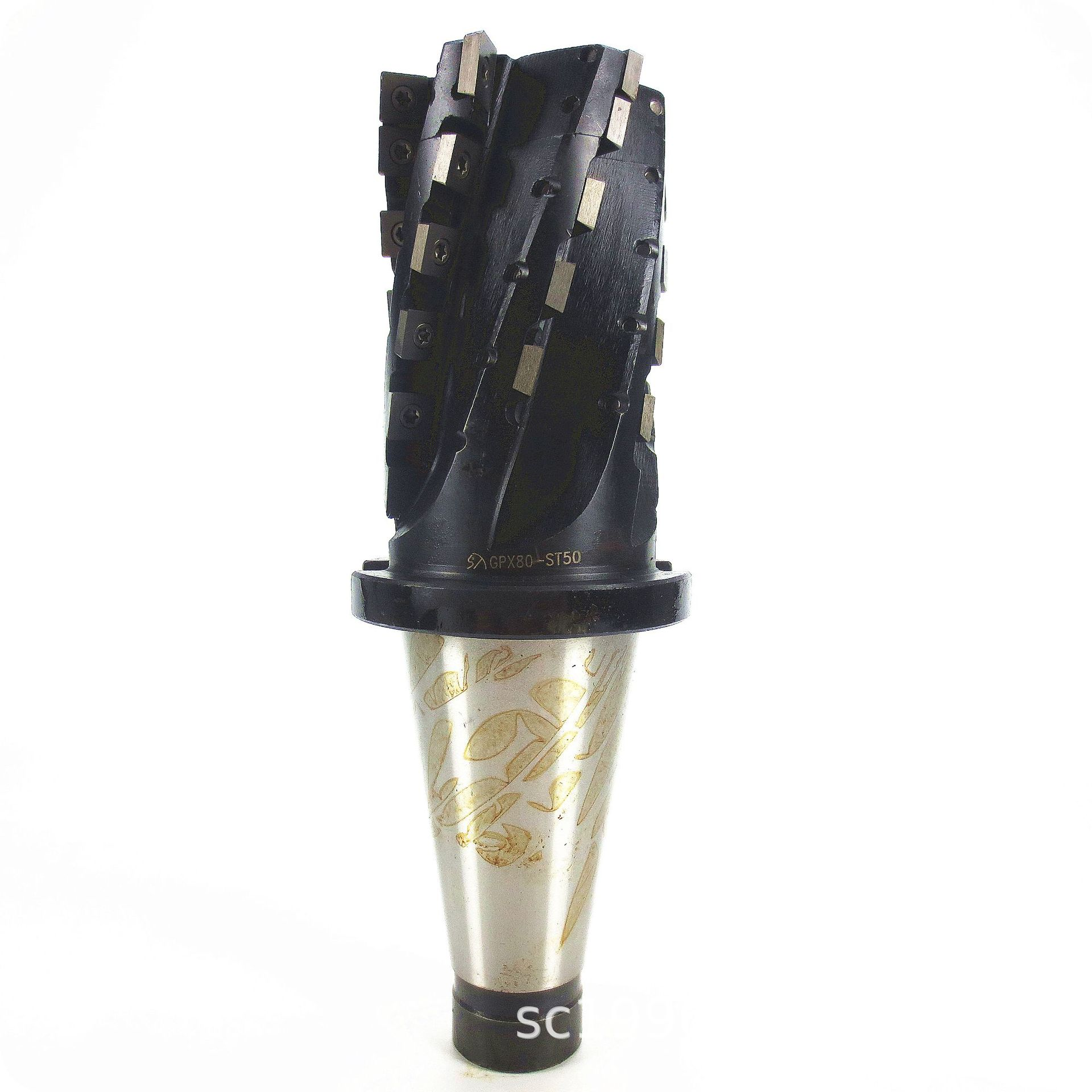
Today, the biggest feature of the development of floor-type milling and boring machines is the development of high-speed milling, all of which are ram-type (without boring shaft) structures and equipped with various milling head accessories with different process performances. The advantages of this structure are that the ram has a large cross-section, good rigidity, long stroke, and fast-moving speed, and it is easy to install various functional accessories, mainly high-speed boring, milling head, two-coordinate double swing angle milling head, etc. The performance and processing range have reached the extreme, greatly improving the processing speed and efficiency.
Traditional milling is processed by boring bars, while modern milling is mostly completed by various functional accessories through rams. There is a trend to replace traditional processing. Its advantages are not only the speed and efficiency of milling but also the ability to carry out the processing of polyhedrons and curved surfaces cannot be accomplished by traditional processing methods. Therefore, many manufacturers are competing to develop and produce ram-type (without boring shaft) high-speed machining centers, because of their economic and technical advantages, and can greatly improve the technological level and technological scope of machine tools. At the same time, the machining accuracy and machining efficiency are improved. Of course, various types of high-precision milling head accessories are needed for technical support, and the requirements are also very high.
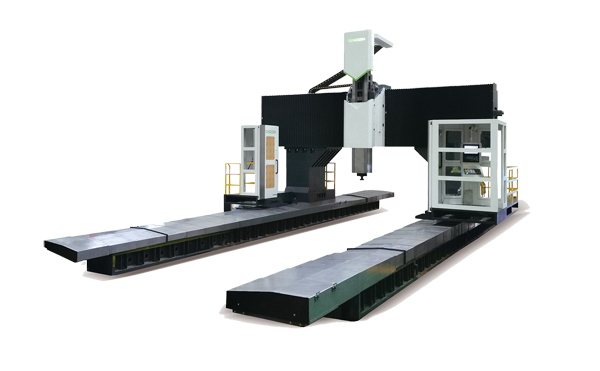
High-speed milling has brought structural changes to the floor-mounted milling and boring machine. The structure with the headstock in the center is relatively common, and its rigidity is high and suitable for high-speed operation. The ram drive structure adopts a linear guide rail and linear motor drive. This structure is necessary for high-speed cutting. Foreign manufacturers have adopted it on floor-type milling and boring machines. Similar domestic products are rare. guide. High-speed machining also puts forward higher requirements for the environment and safety, which brings about the concept of pleasant mass production. All manufacturers attach great importance to the safety protection and operability of people under the high-speed operation of the machine tool. The fully enclosed structure is implemented, which is both safe and beautiful.
The traditional horizontal boring and milling machine is mainly suitable for the processing of various mechanical parts, especially the mechanical transmission box and various curved surface parts. Due to the improvement of the technical level of various equipment, the requirements for the mechanical structure are becoming more and more simplified, and fewer transmission parts are required, especially the parts used as the transmission box will be less and less, the mechanical transmission is mostly direct drive, and the transmission parts are The precision requirements are very high, which puts forward higher requirements on the technological performance of horizontal boring and milling machines. Therefore, as in the traditional boring-shaft type structure, the processing objects tend to decrease and will be replaced by the boring-shaft-free electric spindle, that is, the high-speed machining center will complete the processing of various parts. The development of horizontal boring and milling machines to high-speed machining centers, on the one hand, is more adaptable to the process, and on the other hand, it also improves the performance level and machining accuracy. Boring and milling, as well as drilling and tapping, equipped with CNC swing angle milling head accessories, and can also process various curved body parts. Equipped with an exchangeable worktable to form a flexible processing unit, which can process parts in batches.

The floor-type milling and boring machine mainly process large and super-large parts of various profiles. At the same time, it can also be equipped with a rotary table, which can perform rotary indexing and radial linear motion, and complete the multi-sequence processing of parts through indexing, which greatly improves the process range. The floor-type milling and boring machine produced by the Italian Pama (Pama) company is specially equipped with a tilting adjustable angle worktable, which further expands the processing range. High-power and high-efficiency cutting is a major processing advantage of floor-type milling and boring machines. The technical requirements of high speed and high precision are increasingly affecting the technical development of floor-type milling and boring machines, which is an important means to improve the technological level of floor-type milling and boring machines. Therefore, floor-type milling and boring machine are changing the single high-power, high-efficiency cutting, and more into the high-speed, high-precision process technology connotation. The ram structure has become the main structure type for high-speed milling and boring. The ram has a large cross-section, high rigidity, and good high-speed running stability. It is easy to install various milling head accessories to achieve high-speed machining.
The development of heavy machine tools will present two major trends.
On the one hand, the development direction is technically based on machining centers or large flexible machining units and large combined compound machining machines. Among them, horizontal boring and milling machines will be gradually replaced by high-speed machining centers and flexible machining units; The combined composite machining center is mainly composed of two or more main machines combined into a composite machining machine tool to adapt to the single-piece and small-batch production of large-scale machining parts. The process is complex, and the auxiliary time and processing cycle are long.
It is difficult for the machine tool to complete all the processing steps, but it can be achieved by two combined machining centers. For example, two CNC gantry boring and milling machines form a composite machining center, and share the bed and guide rails, respectively equipped with a rectangular worktable and a rotary worktable (indexing), which can perform boring and milling processing; a floor-type milling and boring machine and A CNC single-column vertical lathe constitute a large-scale composite machining center, sharing the guide rail of the bed, with a floor platform and a rotary table, which can complete processing such as turning, boring, milling, and drilling, and the rotary table can be indexed.
There are also various combinations such as two large floor milling and boring machines sharing the bed guide rail. In this way, the floor space is saved, the cost is reduced, and the processing efficiency is improved.
Another development trend is to pursue refined manufacturing, improve the technological content of equipment manufacturing, and reflect the safety, environmental protection, and humanized characteristics of machine tools.
To sum up, the technology of contemporary horizontal boring-milling machines and floor-standing boring-milling machines has developed very fast, which is mainly reflected in the update of design concept and the great improvement of machine tool running speed and manufacturing process level.
On the other hand, the structure of machine tools has changed greatly. The application of new technologies is endless. The structure of the horizontal boring and milling machine develops towards the high-speed motorized spindle, and the floor-standing milling and boring machine develop towards the ram-type (without boring shaft) structure. The new trend of technological development in the coming period.